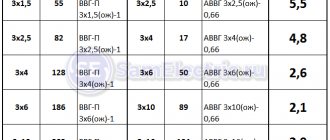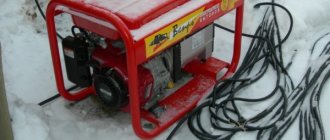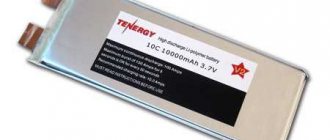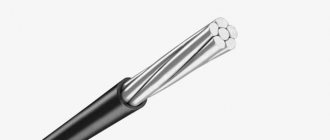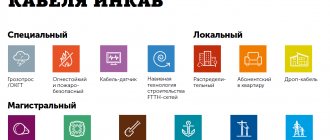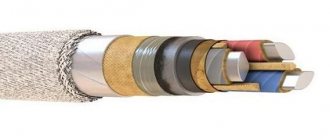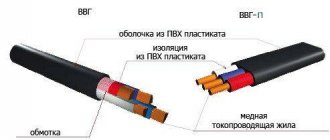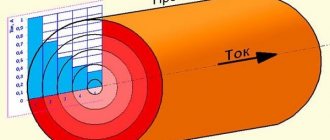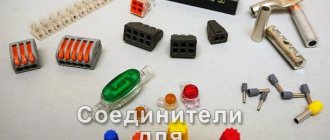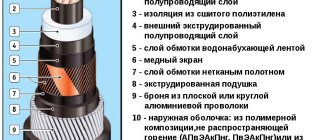Author of the article
Pavel Yastremsky
Head of IT department. In the field for more than 10 years, he develops his own software.
Ask a Question
The ubiquity of fiber optics was a consequence of the development of the Ethernet standard, which was born back in 1973. At that time, the data transfer speed in computer networks reached a maximum of 2.94 Mbit/s. Today this figure seems simply ridiculous and does not meet the requirements of a modern Internet user. The development of the 802.3 standard resulted in the emergence of 1000BASE-X, built on a fundamentally different information transfer technology.
Definition
Fiber optic cable is part of the passive components of FOCL (Fiber Optic Communication Line). It consists of light-carrying elements protected by an outer shell. The segment length can reach 100 km without loss or weakening of the signal. Using a coupling, the segments are connected to each other. The luminous flux is used to transmit a signal along the channel. It is generated by a laser and transformed by an electrical regenerator and a photodetector.
So which is better - optics or copper?
Nowadays, any large and even medium-sized Internet provider uses optical fiber in a number of segments of its networks. And vice versa: no matter how the provider lures you with a connection to the “fastest new generation system,” certain sections of its networks are traditional copper cable. It’s just that the rules are dictated by environmental conditions (in some places they are more suitable for copper, and in others for optics) and economic feasibility, and marketing is marketing.
No one can say for sure what type of highway the providers “The Bronze Horseman” and “Optical Illusion” connected your home to, so we will assume that their offers differ only in the way they connect subscribers inside apartments.
The table below compares the properties of fiber optics and twisted pair:
| Optical fiber | Copper twisted pair | |
| Theoretically achievable communication speed | OS1 – 40 Gbps OS2– 100 Gbit/s OM3 and OM4 – 100 Gbit/s | Up to 10 Gbps for Category 6 and 7 cables. |
| Maximum continuous line length | OS1 – 100 km OS2 – 40 km OM3 – 300 m OM4 – 125 m. | 100 m |
| Physical properties of the cable | Thin, fragile | Thick, flexible |
| Exposure to external influences | Excessive bending, pressure, certain types of radiation | Electromagnetic interference, atmospheric electricity, corrosive chemical environments, fire, unauthorized connection to read data |
| Compatibility with client equipment | Requires the purchase of special adapters | Compatible with any device equipped with RJ-45 jacks |
| Service | Requires special equipment and training | Requires minimal skills and knowledge |
| Price | High | Low |
Let's summarize:
- A fiber optic line is up to 10 times faster and has a much longer range than twisted pair, it is not affected by interference from electrical equipment and power lines, is durable and strong, does not burn, and does not lose its properties from moisture, acids and alkalis. Does not allow spy tapping or eavesdropping via inductive connection.
- A fiber-optic network is easier to disguise in the interior; it does not require the installation of wide, unaesthetic cable channels.
- Fiber optics is, although flexible, glass, and any glass can crack and crumble. Therefore, installation and modernization of such a network requires great care. If damaged twisted pair can be cut and connected by simple twisting, then to restore broken optics you need a special welding machine and the ability to handle it. And sometimes even minor damage to a fiber optic line requires its complete replacement.
- The main advantage of twisted pair is its low cost and ease of use. Most likely, you will not be charged any extra money for connecting to the Internet via a copper cable, but you will have to pay for optics, because they are expensive. A twisted pair cable with a universal connector can be immediately plugged into a computer - and the Internet will appear on it. For optics, you will again have to fork out for a special socket, modem (ONT terminal or router), and network adapters. And this is also not cheap.
Purely fiber optic networks inside houses and apartments are still very rare; most often they are made hybrid - partly optical, partly copper wire, partly wireless. The optics are usually connected only to the modem, and the end devices - computers, smartphones, smart TVs, etc. receive the Internet over the same twisted pair cable or Wi-Fi, because they are not equipped with light signal decoding modules. This means that no matter what super speeds your provider promises you, slow network segments will reduce it to nothing.
So, your choice is “The Bronze Horseman” if:
- You don't want to overpay for something you probably won't get. If your devices that consume Internet traffic operate on outdated Ethernet or Wi-Fi protocols, then optics will not make them faster.
- You often move your computer from place to place, you have a dog that likes to chew wires, or small children who grab everything. And if the cable is damaged, it’s easier for you to fix it yourself than to pay a technician.
It is better for you to become a client of Optical Illusion if:
- You are for everything new against everything old. Fiber optics is the technology of the future and therefore worthy of investment. And even if it is not friendly with every device, we can expect that soon the manufacturers of the latter will come to their senses and equip their products with fiber-optic support. After all, consumers want this and are ready to invest.
- Finances are not a problem for you. You have modern technology that supports the latest wired and wireless communication protocols, and you are ready to make it “take the maximum height.”
- You need speed and that's it.
- Network security in terms of possible data leakage is your everything.
Advantages and disadvantages
Optical fiber has a number of undeniable advantages over twisted pair:
- high bandwidth of optical fiber compared to copper. Google built the US-Japan highway with a maximum transmission speed of 600 Tbps;
- lower power losses and the ability to transmit data over long distances;
- resistance to electromagnetic interference;
- the length of a network segment using single-mode fiber can reach 100 kilometers;
- optics are lighter, thinner and take up less space;
- transmitted information is very difficult to intercept, since the cable does not produce electromagnetic energy;
- oxidation resistance;
- absence of precious metals in the design, resulting in low cost.
Among the disadvantages it is worth noting:
- installation complexity requires special equipment;
- due to improper installation, when bending the wire, the optical fiber may break or the signal may lose intensity at an angle;
- To test data transmission over a fiber optic cable, special devices are required.
Fiber Type Selection
Cables for trunk fiber optic lines, as a rule, use standard single-mode fiber that complies with the G.652D standard, which meets all the necessary requirements for organizing communications. Such fiber is available in the market without increasing the price of the cable.
The most promising solution for organizing communications on single-mode fiber is to use fiber with the following characteristics:
- reduced attenuation at a wavelength of 1550 nm: up to 0.18 dB/km (instead of 0.22 dB/km),
- bending resistance according to category G.657A1.
Multimode fibers are limited in the length of the transmitted signal and are significantly more expensive. Their use is possible on a small network within one facility.
Dispersion-shifted fibers (G.655) have also recently been little used due to their higher cost and the ability to use standard single-mode fiber for the same purposes.
Principle of operation
The fiber optic cable is based on glass light guides. These are unique routes for transporting light rays from the source to the receiver. Electrons move along the familiar copper conductor, which is still widely used in local networks to this day. Information is encoded by ones and zeros: if there is an electrical impulse, then it is transformed by the network card into the value “1”, and vice versa, if it is not there - into “0”.
With optics the situation looks approximately the same. Its beams—modes—move in it at the speed of light. Their presence determines the transmitted bit of information, only at a much higher speed (more than 10 Gbit/s).
To send a light signal, a laser is used, the beam of which is directed into the core of the cable. Using a system of mirrors, it is shielded, which allows it to pass through bends and irregularities of the channel. The end of the light path is the end equipment, such as a media converter or PON-enabled router.
Its task is to convert an optical signal into an electrical one and vice versa. A standard twisted pair cable is laid from it and connected to network equipment, for example, a home router.
Areas of use
The first thing that comes to mind when you think of fiber optic cable is the Internet. All well-known providers have replaced their copper communications with high-speed optics. This made it possible to increase the channel capacity necessary for transmitting Internet traffic, organizing IP telephony, television and dedicated services.
In general, the entire World Wide Web was built with the help of FOC. Its networks stretch from the coast of the United States across the globe in the form of underwater communications. The fragile cable is protected by thick-walled insulation, and it is laid using special ships under the ground at the very bottom of the ocean.
This technology is becoming increasingly popular in the construction of local networks. This is especially true for country houses where there is no access to the network of large providers. There is a practice of erecting towers with Wi-Fi guns, from which optics extend to private properties, thus allowing you to connect to the Internet far from the city.
In addition, optical fiber is used in the following areas:
- industrial control systems;
- aviation systems;
- military command, control and communications systems;
- sensors – optics can be used to deliver light from a distant source to a sensor to obtain information about pressure, temperature or other information;
- Power Delivery – Optical fibers can provide exceptionally high levels of power for applications such as laser cutting, welding, marking and drilling;
- illumination - a bundle of fibers assembled together with a light source at one end can illuminate hard-to-reach areas - for example, inside the human body, when combined with an endoscope. They can also be used as an exhibition sign or decorative lighting.
Construction and materials
Having decided what optical fiber is, let’s move on to a description of its structure. To better understand the structure of optical fiber, consider the process of its production:
- heated quartz sand is pulled through a scanner, which checks the diameter of the resulting thread;
- then into the cooling chamber;
- and finally into a bath of polymer, which adheres and forms an outer protective layer;
- at the end of the vertical conveyor there is a reel onto which the cooled fiber is wound at a speed of 3 km/s;
- it is transported to the factory, where each thread is dyed so that they can then be distinguished depending on the data transmission channel;
- on a special machine, bundles are formed from them, which are then sealed into a polyethylene casing;
- the bundles are sandwiched with a fiberglass reinforcement rod and then packaged in outer insulation. This is how the structure of the fiber optic cable structure is formed.
Depending on the cable use scenario, its design features may change, but the general principle remains the same. To understand the arrangement of fiber optic cable elements, a sectional photo will be the most convenient way to demonstrate them using the most common example:
- the optical fiber core is the most fragile part of the cable;
- hydrophobic filler provides protection through shock absorption;
- this structure is surrounded by a central tube;
- the intermediate polyethylene shell provides additional protection for the core;
- as a rule, the cable contains armor (there are many varieties);
- All of the above elements are covered by an outer shell.
Kinds
There are many types of fiber optic cables depending on the nature of their application. They come in two “modes”: multimode and single-mode.
- Multimode fiber (MMF) has two core sizes: 50 µm and 62.5 µm. The wide core allows you to transmit multiple data streams simultaneously. Multimode fiber uses a light-emitting diode (LED) or vertical cavity surface emitting laser (VCSEL) as the light source. Due to its high dispersion and attenuation rates, it is typically used to transmit large amounts of data over relatively short distances.
- Single mode fiber (SMF) has a much smaller core diameter of 8.3 µm or 9 µm and a single light path that can travel longer distances. Single-mode fibers are typically used for longer runs, such as campus data networks, cable television transmissions, and telecommunications networks.
The way the cable is laid determines its design. The most common types of optical cables according to their application are:
- for indoor installation;
- for installation in cable ducts, with or without armor;
- for laying in the ground;
- suspended, with or without a cable;
The type of fiber determines the armor parameters, the presence of a suspension cable and other characteristics of the optical cable. Environmental conditions can be aggressive, be it soil or water. The most common line breakdowns are caused by mechanical damage. For example, during repair work, the cable may be damaged by large machines, or underwater networks may be cut off by submarines or ships. For each application scenario, the appropriate type of cable is selected.
Multimode fiber optic cable
Such a cable allows several beams to pass through itself, which propagate along paths independent of each other. In this case, it is necessary to use cores of larger diameter, which leads to a significant increase in mode dispersion.
The result of more intense light scattering inside the cable is accelerated signal attenuation, which significantly reduces the length of the data transmission line. When the signal needs to be transmitted over significant distances, there is a need for additional repeaters.
In turn, multimode cables according to fiber class are divided as follows:
| Fiber type | Bandwidth, MHz/km | Transmission distance, m | |||
| 850 nm | 1300 nm | 1GBase-SR | 10GBase-SR | 40GBase-SR4 / 10GBase-SR10 | |
| 62.5/125 OM1 | more than 160 | more than 500 | 275 | — | — |
| 50/125 OM2 | more than 500 | more than 500 | 600 | 83 | — |
| 50/125 OM3 | more than 1500 | more than 500 | 1000 | 300 | 140 |
| 50/125 OM4 | more than 3500 | more than 500 | 1100 | 550 | 170 |
Installation
The process of connecting to the Internet via fiber optics is more complicated than it seems at first glance. All the advantages of the speed of light are contained in a fragile core that requires careful handling. Compared to copper twisted pair, servicing such communications requires increased qualifications of workers involved in installation work and connecting subscriber equipment. This is especially true for professional teams servicing the provider’s highways. Whether it's an emergency repair or a planned site connection, a network engineer always has a whole set of tools with him to maintain fiber optic cable for the Internet.
To connect several cable segments, they must be welded. This is possible with the help of expensive electric welding equipment, which includes a microscope.
Advanced models are equipped with CNC, which adjusts the welding angle and inclination to achieve the best result. The problem is that even a small error can have a negative impact on the speed of data transfer over the fiber.
Installation process:
- First you need to prepare the cable. Using a special tool, the outer and inner insulation is cut off, and the core is also cleaned.
- The stripped fiber must be treated with an alcohol-containing substance and then shortened to the desired length using a cutter.
It is important to note that it is very sharp and if it gets under the skin, it is unlikely to be removed without the help of a doctor, so installation should be done extremely carefully.
The welding area is then covered with heat shrink and heated to a high temperature.
- To connect the finished cable to the final equipment, it must be crimped. The fiber crimping process varies depending on the fiber type. If we talk about household use, then you can find ready-made patch cords on sale.
For home use, it is not necessary to purchase expensive equipment. You will still need a cleaning tool and a cutter, but they are inexpensive (around 1000 rubles), and you can do without a welding machine. It will be replaced by an inexpensive clip into which the prepared ends of the cable are inserted and secured. This is quite enough for the light flux to pass through the channel.
Comparison of optical fiber and twisted pair
A legitimate question arises: why, despite all the advantages of fiber optic cable, is the Internet delivered to most Russian apartments using copper twisted pair cable? The fact is that they are not directly comparable, they just serve different purposes.
Undoubtedly, optics have the advantage of the speed of light and are capable of delivering volumetric data over vast distances. This is its main purpose - to build entire highways. When it comes to the provider's shield inside the entrance, here the twisted pair is completely justified. Thanks to its ease of installation and sufficient speed for transmission over short distances (for example, inside an apartment building), it becomes indispensable.
The use of optical fiber is always justified on an industrial scale. When designing a local network for a small enterprise or office, the costs of cable and terminal equipment are taken into account. In this case, fiber optic cable for the Internet is inferior to copper due to the fact that its installation is many times more difficult and expensive.
Purpose
Fiber optic cable is one of the most modern and best ways in the world to quickly transmit data over long distances. At the same time, the development is not at all unique - it appeared at the end of the 20th century and has been effectively developing since then.
People actively communicate, improve their everyday life and economy, so the data transfer speed must be high. Currently, this cable is used by many Internet providers. It has no side effects, such as signal degradation over long distances and overheating. It is not affected by stray currents.
